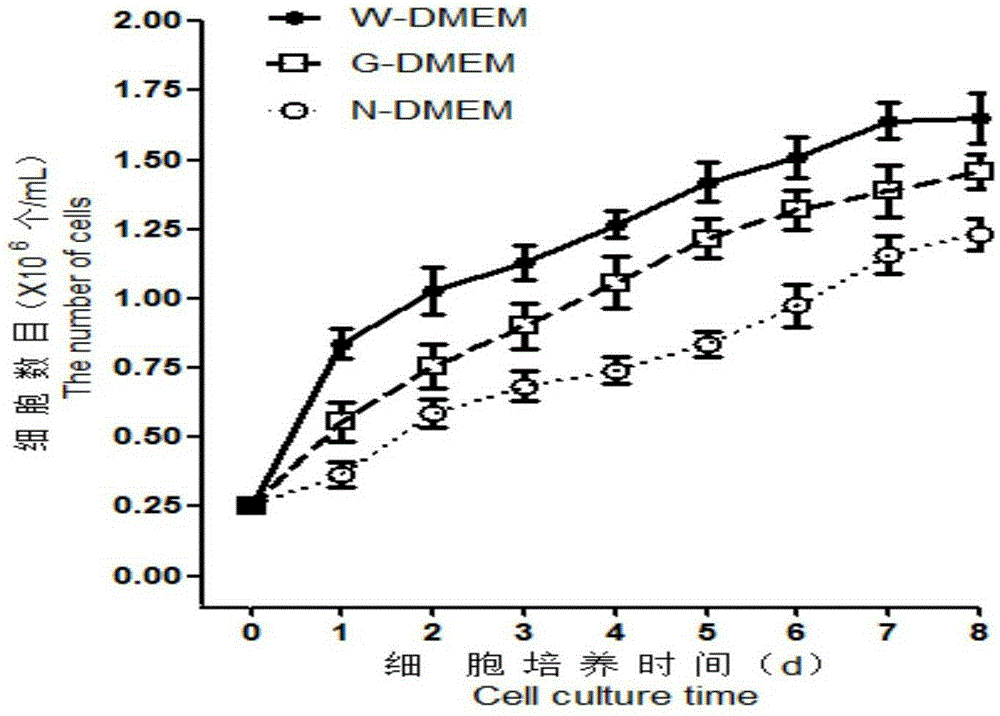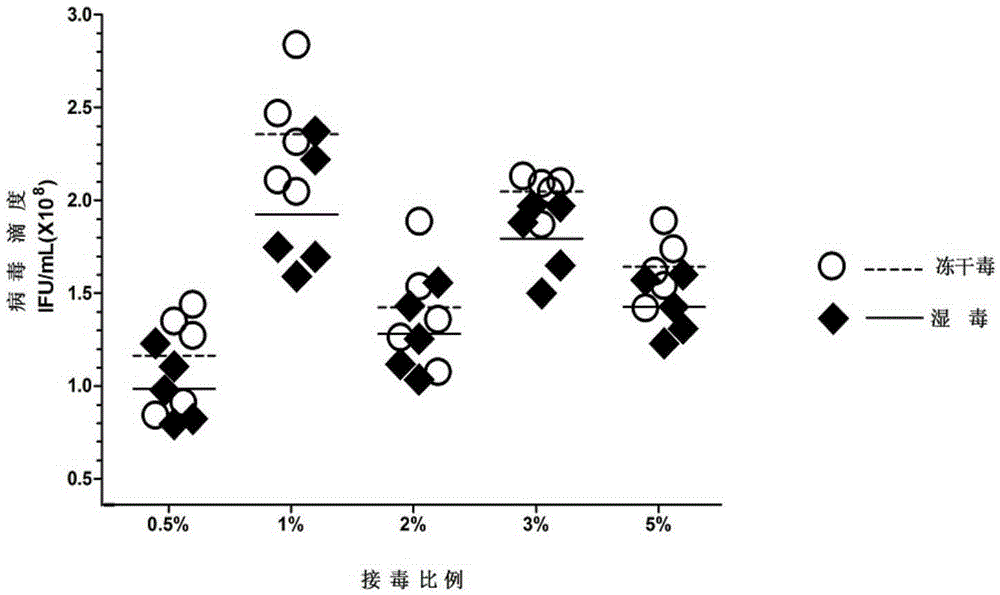Classical swine fever virus (CSFV) gene recombinant adenovirus and production method thereof
A technology of genetic recombination and swine fever virus, which is applied in the direction of biochemical equipment and methods, viruses, antiviral agents, etc., can solve problems such as heavy workload of personnel, cumbersome production process of tissue virus, and restrictions on the development of trade of live pigs and pork products
- Summary
- Abstract
- Description
- Claims
- Application Information
AI Technical Summary
Problems solved by technology
Method used
Image
Examples
Embodiment 1
[0018] Embodiment 1: the preparation of recombinant adenovirus of classical swine fever virus E0-E2 gene
[0019] 1.1 By analyzing the genome sequence of CSFV, an antigenic nucleotide fragment was obtained, and its sequence was modified. The modified nucleotide sequence is SEQ ID NO: 1, encoded The amino acid sequence is SEQ ID NO:2. Compared with the vaccines that have been reported, the vaccines made from the above fragments have better immune performance. The transformed gene was cloned into the PET32a(+) polyclonal restriction site, transformed into DH5a Escherichia coli, coated with ampicillin-resistant plates, single clones were picked, and sequenced for identification. Select positive colonies with correct sequencing, pick single clones, and sequence them for identification.
[0020] 1.2 The target gene was directional cloned into the shuttle plasmid vector pAdTrack-CMV, and the "two-step transformation method" was used for homologous recombination in bacteria to cons...
Embodiment 2
[0024] Example 2: Growth process of HEK293 cell adherent culture in different media
[0025] 2.1 HEK293 cell culture Take out 3 tubes of the same batch of HEK293 frozen cells from the liquid nitrogen tank, quickly put them in a 37°C water bath, and shake them gently to make them melt quickly. Aspirate the cryopreservation solution with lysed cells, add them to centrifuge tubes previously filled with culture solution (preheated at 37°C, 6-8mL), gently blow and beat to mix, centrifuge at 1000g / min for 5min, discard the supernatant, and add 10mL containing 20% serum (WeikeshengFBS, GibcoFBS, GibcoNCS) in DMEM medium, gently blown into cell suspension, respectively in 10mL culture flasks, 37 ° C, 5% CO 2 Cultivated under the incubator.
[0026] 2.2 Exploration of different culture media Change the medium once after resuscitating the cells for 48 hours. When the confluence of the cells is about 90%, wash once with PBS, add a little trypsin to cover the cell surface, and digest for...
Embodiment 3
[0028] Embodiment 3: the technique of different storage conditions of recombinant adenovirus of classical swine fever virus
[0029] 3.1 Operation methods under different storage conditions After the cells have been subcultured for 24 hours, when the adherent cells have reached 70%-80% monolayer cells, replace 10% of the medium with 1% of the medium. Recombinant adenoviruses were used to infect HEK293 cells at a ratio of 1% and 3%, respectively, and the virus was harvested in due course according to the disease conditions.
[0030] 3.2 IFU results under different storage conditions
[0031] Recombinant adenovirus was used to infect HEK293 cells at a ratio of 1% and 3%, respectively, and the results showed ( figure 2 ), the IFU of cells infected with freeze-dried virus is greater than that of cells infected with wet poison in the same proportion; at the same time, whether it is wet poison or freeze-dried virus, the IFU of 3% inoculation ratio is greater than the IFU of 1% ino...
PUM
 Login to View More
Login to View More Abstract
Description
Claims
Application Information
 Login to View More
Login to View More - R&D
- Intellectual Property
- Life Sciences
- Materials
- Tech Scout
- Unparalleled Data Quality
- Higher Quality Content
- 60% Fewer Hallucinations
Browse by: Latest US Patents, China's latest patents, Technical Efficacy Thesaurus, Application Domain, Technology Topic, Popular Technical Reports.
© 2025 PatSnap. All rights reserved.Legal|Privacy policy|Modern Slavery Act Transparency Statement|Sitemap|About US| Contact US: help@patsnap.com



